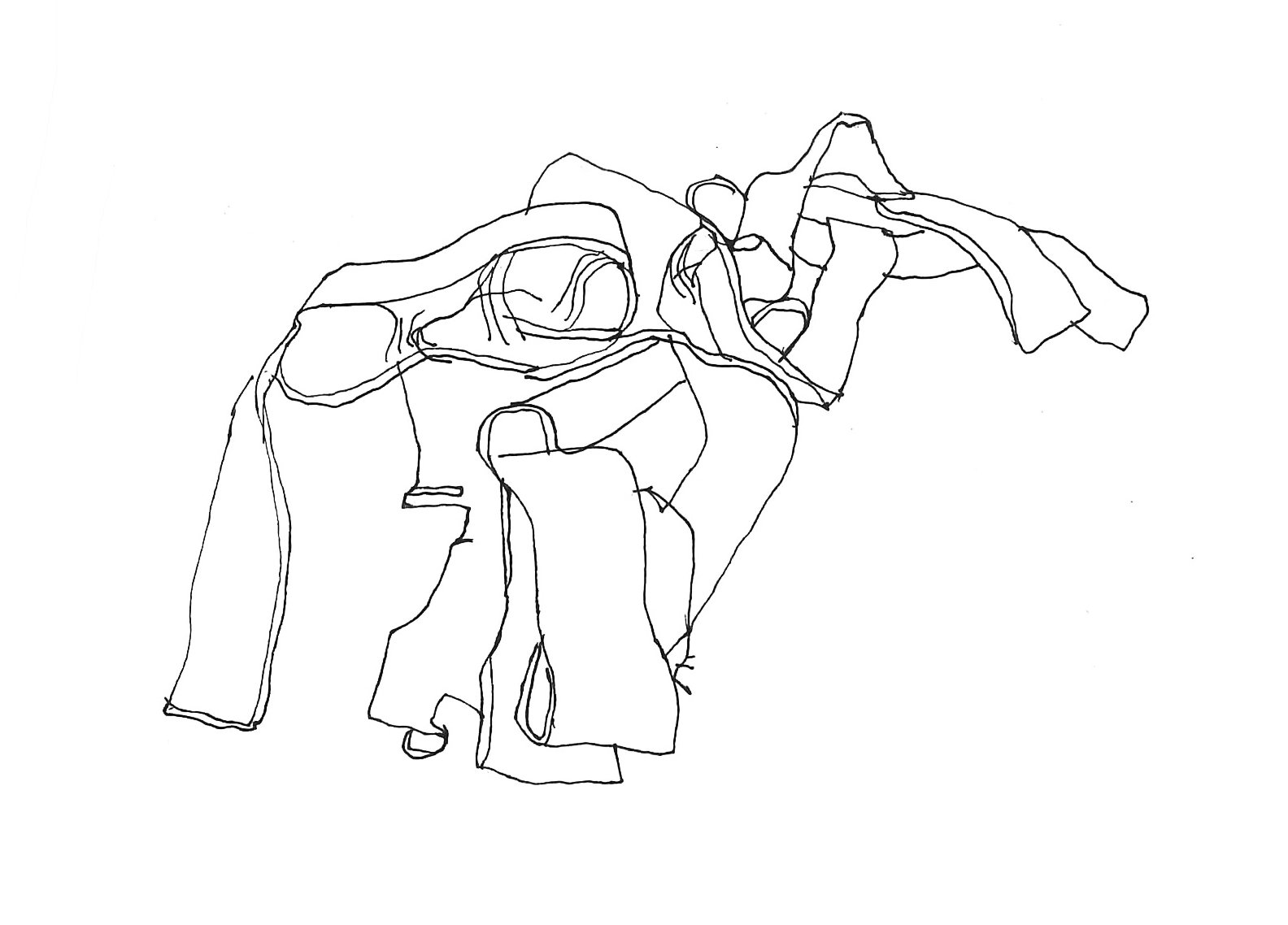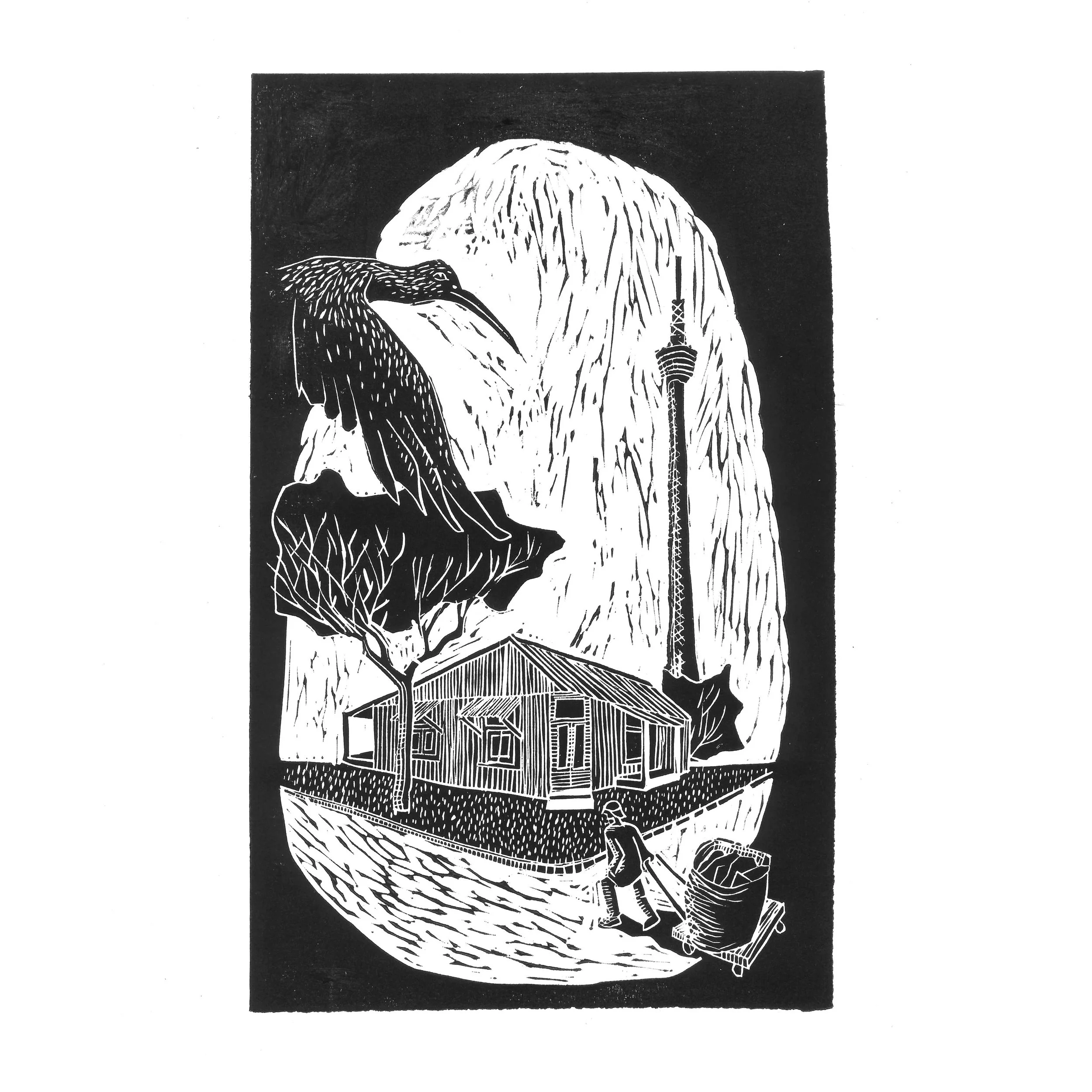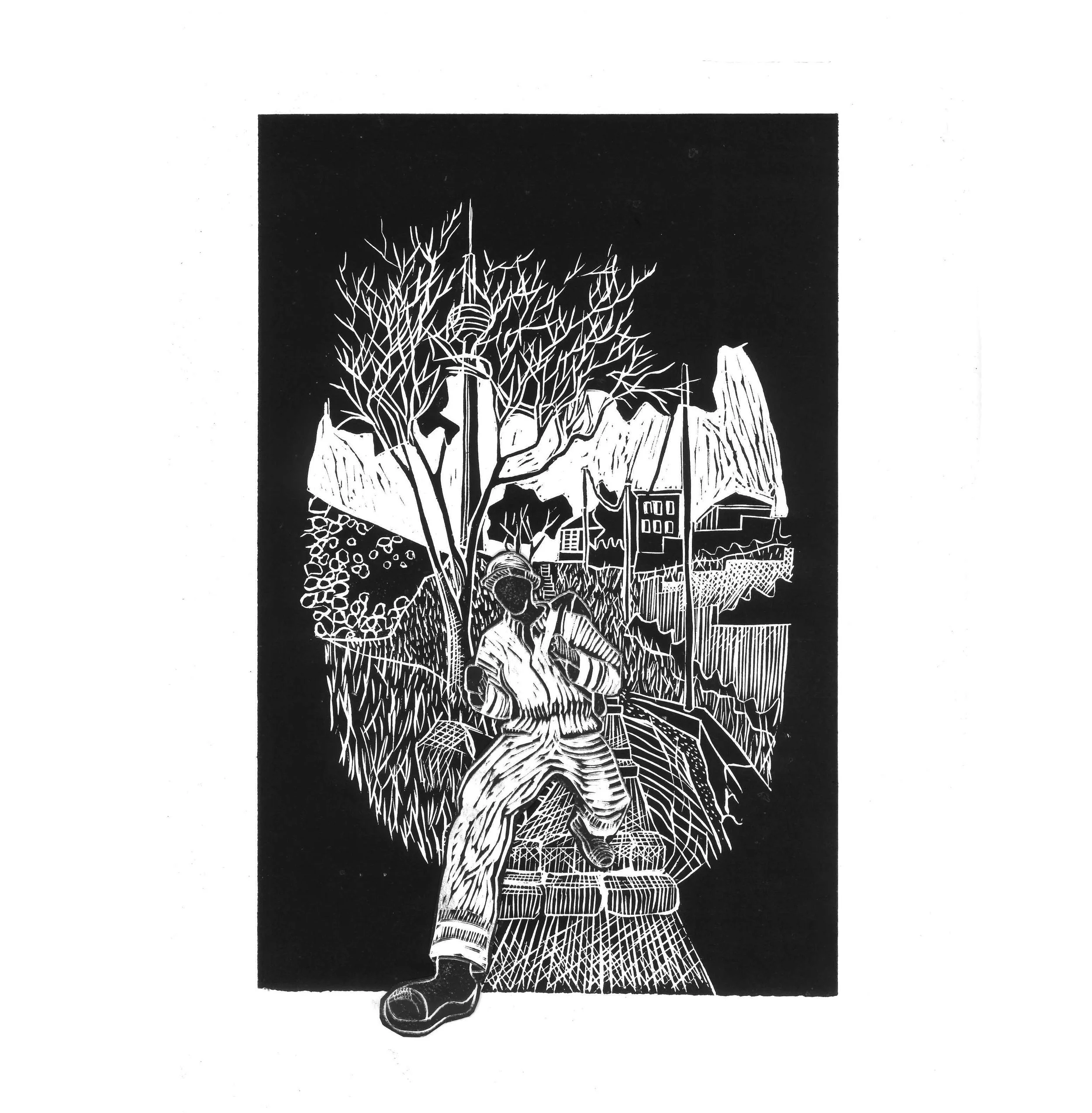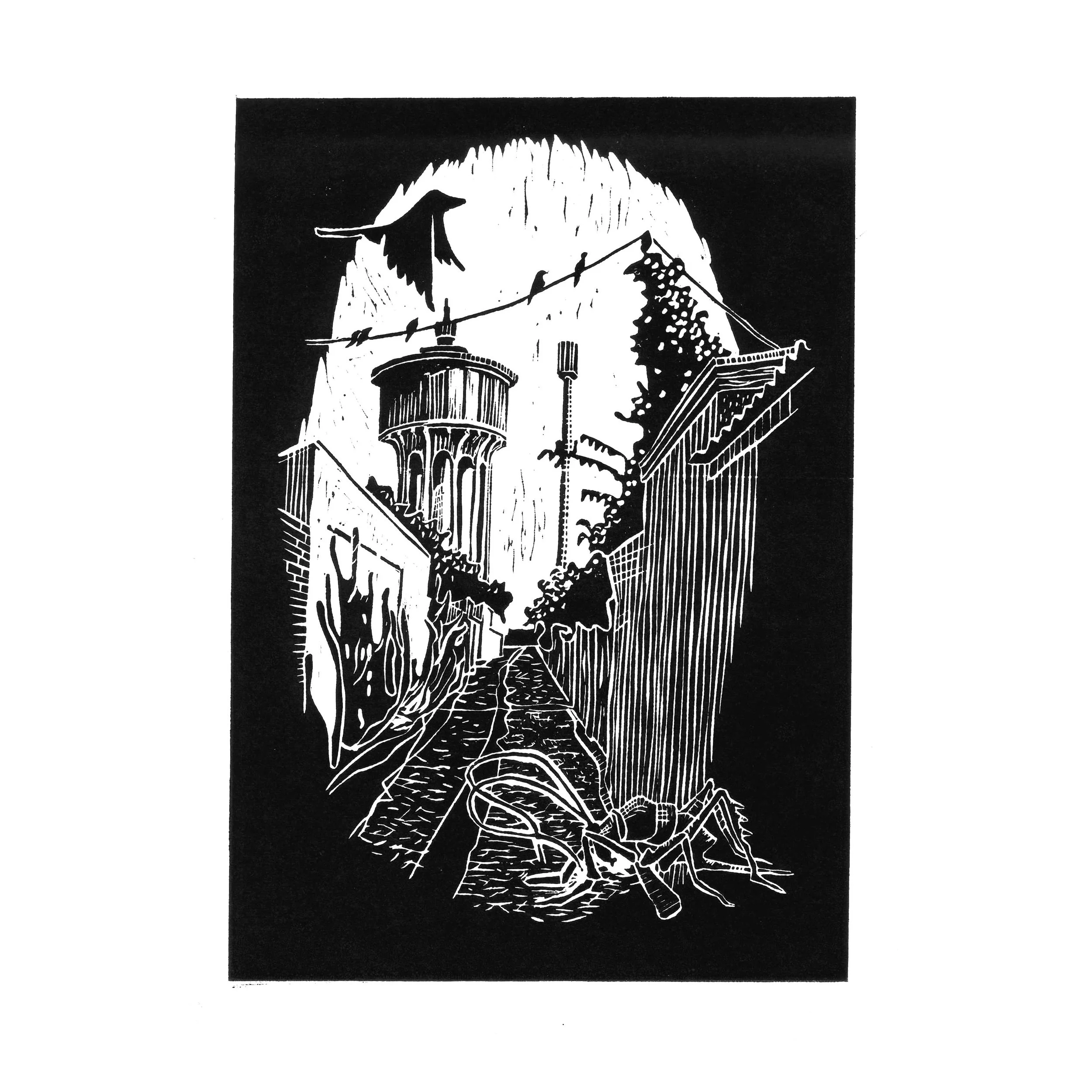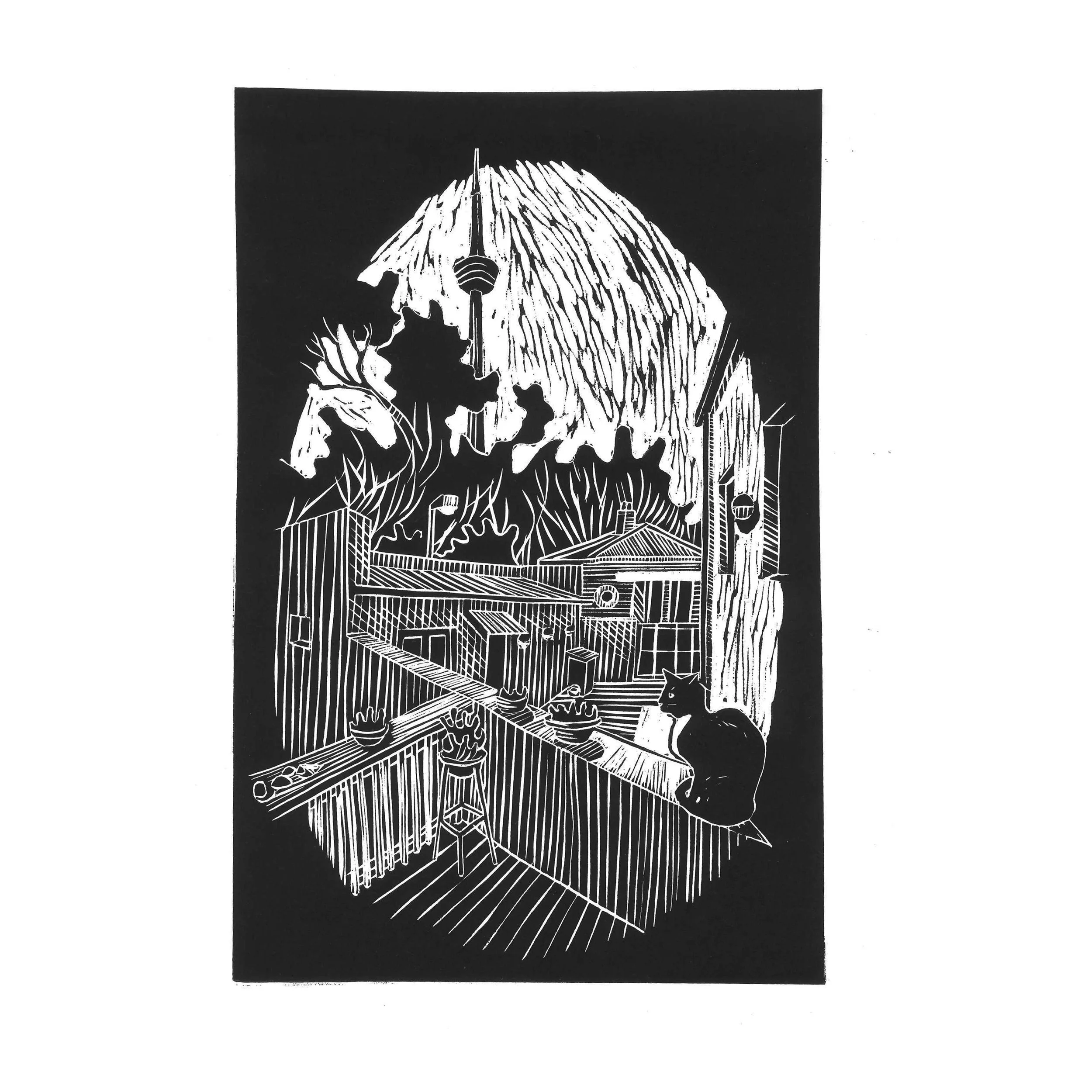How Art Can Help Us Build Better
Mindful Design #08
Image by Thorsten Deckler
Welcome to the eighth edition of the Mindful Design Newsletter.
This is our last newsletter for 2023 and it's not about architecture!
I wrote many drafts for this end-of-year newsletter, but was not happy with any of them. That was until I started thinking about the art I made in 2023 and how it helped me maintain sanity in the trench-warfare-like existence of being an architect in Johannesburg. Making art has become a way of practising mindfulness through paying attention to my surroundings. The weird drawing in the header represents one of those moments in which something as mundane as a pile of mouldy carpet off-cuts revealed itself as something beautiful, but I only noticed this once I started drawing!
Similarly, the Brixton Monument series, described at the end of this newsletter, is about recognising beauty amid the wreckage of Johannesburg. This beauty exists all around us and art can help us take notice of it. In this way, we can learn how to shape our own spaces more mindfully by recognising what works, instead of destroying it.
If you are looking for fun and effective therapy, pick up the Artist’s Way or take some art classes. I attend a weekly class in Brixton hosted by Bronwen Findlay (bronwenfindlay@gmail.com). The class is as much about making art as it is about connecting with others over a cup of tea and snacks.
Wishing you a great mindful New Year!
Does your New Year’s resolution include making changes to the spaces you live and work in?
Not sure where to start? Looking for advice that can help you think more strategically about building or even avoid it altogether? Book an Expert Call with me and you will get:
Answers to your most pressing questions.
Clear steps to ensure a successful project.
The best way to get your project started.
Thorsten Deckler is an architect based in Johannesburg, South Africa. He helps people create spaces that prioritize human well-being by employing the Mindful Design Approach. You can see more of his sketches of Johannesburg, his travels, and his design process on Instagram @thethinking_hand.
Brixton Monuments I
This is the first lino cut in the series and how the project came about. It was used to raise money for the re-painting of the small, corrugated iron worker’s cottage-cum-shop on the corner of Fulham and Wimbledon Road. The cottage is one of few national monuments that represent Johannesburg’s working class in the early days of the gold rush. Although Brixton was a white suburb under Apartheid, today it houses a mix of many races and income groups. The recycler in the foreground is a common figure in many Johannesburg neighbourhoods and the TV tower in the background is visible from almost anywhere in the city.
Brixton Monuments II
This building used to be a small convenience store run by a Chinese lady called Pi. When she retired, the building became an artist studio called SHADE, where my friend Tamzyn Botha obtains materials from recyclers which she then uses in her projects. The figure in the foreground is one of the Sentech Croozers, a group of boys who build custom bikes. The taxi speeds down Caroline Street which, according to rumour, the Apartheid government envisioned an escape route should the city centre erupt in unrest.
Brixton Monuments III
The other day I was working out on the Brixton steps shown here, when a man dressed in construction overalls literally flew past me, jumping over multiple steps at a time. These stone steps go up the Brixton ridge and are a rare pre-democracy concession to the workers who serviced the white suburbs of Johannesburg. Early in the mornings, the steps are busy with people walking to work and exercising.
Brixton Monuments IV
This is a view into one of the service lanes in Brixton, which were used to collect human waste before Johannesburg had a waterborne sewerage system. The ‘night soil’ was collected in buckets from outhouses accessed via the alley and transported away in donkey carts. Today the alleys are raw and somewhat wild spaces where vegetation grows unchecked, and people have constructed walls and gates using recycled or unfinished materials. The alleys give access to cottages and backyard rooms. They have an intimate scale and seem to lie dormant, waiting to come alive with kids’ games, small shops, or even bars. The creature in the foreground is a Parktown Prawn, a terrifying invader of Johannesburg homes.
Brixton Monuments V
This scene captures a moment of the Brixton Light Festival held in September 2023. The large model ships were made by David Gara and were worn as headgear in a performance put on by the Well-Worn Theatre Company. For days before the festival people rehearsed moving like ships rolling on high seas. The lines on the road mark the watershed that runs all the way up the African continent from where water makes its way either into the Indian Ocean or the Atlantic. In the background is the Brixton Tower lit up with moving patterns projected from someone’s backyard. The glowing Ibis (Hadeda) was made, carried and operated by Alistair Findlay at the head of the festival parade.
Brixton Monuments VI
This is our backyard with our cat, named Brixton. The linocut was made on the day she died. My office is in the house with the round window. I walk to work every day, and exercise in the park or at the steps. I walk to the shops and to friends’ houses. Brixton properties are small, and the houses sit close to the street. Many of them have porches that make the street feel safer which seems to encourage people to socialise in public and to get to know each other.

